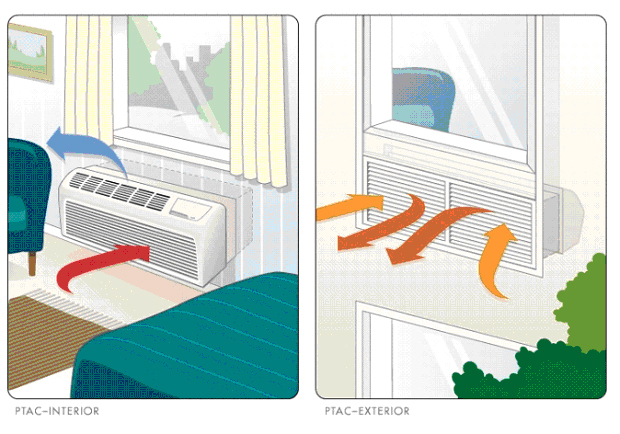Q&A About PTAC Systems
Posted by AC World on January 8th, 2015

With all of the different heating and cooling options available these days, it can sometimes be a challenge to keep all of them straight.
Here are a few common questions (and answers) regarding PTAC (Packaged Terminal Air Conditioner) Systems:
Q: In trying to figure the best option for an addition I’m building on my house, PTAC seems to be the way to go. Will I need to put in a wall sleeve or just ask the contractor to frame the opening?
A: You will need an exterior grille as well as a wall sleeve for new installations. For a PTAC system to work properly, you need three elements: the sleeve, the grille and the heat pump or AC unit itself, which is sometimes referred to as the chassis.
Q: I thought it would be relatively easy to hire a contractor to install a PTAC system at my place of business. However, it’s becoming harder than I thought to find someone. Do you have any suggestions?
A: Because the PTAC unit is a self-contained system, the job of installing it is regarded by some HVAC contractors as too small. You might do better calling a carpenter or general contractor. Or give us a call at AC World to see how we might be able to help!
Q: What are the differences between a PTHP heat pump and a PTAC unit?
A: Just by looking at the exterior of the unit, it can be hard to tell whether it is primarily an AC unit with secondary heat or a heat pump and air conditioner, also with secondary heat. While PTAC and PTHP units both have electric strip heaters, the electric heater on a PTAC unit is its only heat source. On a PTHP, the strip heater serves as a backup heating unit.
Q: Do I need a remote thermostat to use a PTAC?
A: No. One advantage of PTACs is that they have built-in thermostats with digital controls that let you set the temperature as you wish. If you’d like something mounted more at eye level, wall-mounted thermostats are an option. Some units offer a wireless mounted wall thermostat, which can be a big help if running wires through a wall could be a problem.
 Loading... Please wait...
Loading... Please wait...


